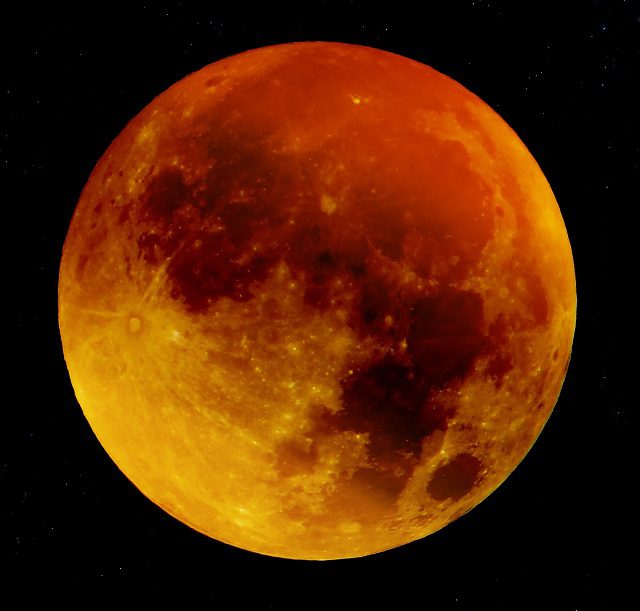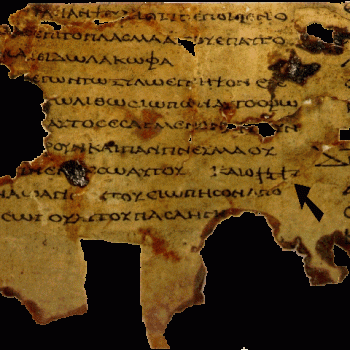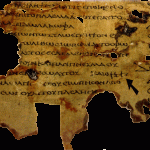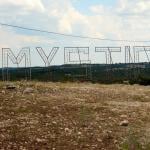
Atheist and anti-theist Bob Seidensticker runs the influential Cross Examined blog. He asked me there, on 8-11-18: “I’ve got 1000+ posts here attacking your worldview. You just going to let that stand? Or could you present a helpful new perspective that I’ve ignored on one or two of those posts?” He also made a general statement on 6-22-17: “In this blog, I’ve responded to many Christian arguments . . . Christians’ arguments are easy to refute . . . I’ve heard the good stuff, and it’s not very good.” He added in the combox: “If I’ve misunderstood the Christian position or Christian arguments, point that out. Show me where I’ve mischaracterized them.” Such confusion would indeed be predictable, seeing that Bob himself admitted (2-13-16): “My study of the Bible has been haphazard, and I jump around based on whatever I’m researching at the moment.”
I’m always one to oblige people’s wishes if I am able, so I decided to do a series of posts in reply. It’s also been said, “be careful what you wish for.” If Bob responds to this post, and makes me aware of it, his reply will be added to the end along with my counter-reply. If you don’t see that, rest assured that he either hasn’t replied, or didn’t inform me that he did. But don’t hold your breath. Bob virtually begged and pleaded with me via email, to dialogue with him in May 2018. But by 10-3-18, his opinion was as follows: “Dave Armstrong . . . made it clear that a thoughtful intellectual conversation wasn’t his goal. . . . [I] have no interest in what he’s writing about.” Be that as it may, what does one make (whatever he thinks of me) of his utter “disinterest” in defending his opinions against serious critique?
Bob’s words will be in blue. To find these posts, word-search “Seidensticker” on my atheist page or in my sidebar search (near the top).
*****
In his article, “Yet More on the Bible’s Confused Relationship with Science (2 of 2)” (12-2-15), Bob opined:
This post wraps up our look at science in the Bible. It’s the conclusion of an analysis of Bible verses that contradict modern science . . .
Let’s continue enumerating scientific errors in the Bible.
Cosmology and earth science
7. The moon creates light rather than reflecting it
God made two great lights—the greater light to govern the day and the lesser light to govern the night (Genesis 1:16).
The sun and moon are said to be greater and lesser versions of the same thing with no acknowledgement that one creates light while the other only reflects it. We see the confusion more clearly in this verse:
The moon shall not cause her light to shine (Isaiah 13:10).
No, the moon doesn’t make its own light.
As a preliminary, readers unacquainted with a basic Christian understanding of the Bible’s relationship to science, should first read my earlier related installment on the topic. In a nutshell, the Bible was never intended to be a science textbook. It was written with a pre-scientific understanding of the world. People reading it had to be able to understand it. It doesn’t follow, however, that it is filled with scientific inaccuracies (as it is still inspired).
In any event, Holy Scripture is written (when dealing with natural phenomena) in phenomenological language: that is, describing things as they appear to (often uneducated) human eyes. The most common example of that, still used almost universally today — something that Bob himself no doubt does –, is saying that “the sun rises” (or “goes down”). This doesn’t imply geocentrism (the earth as the center of the universe), or any other sophisticated cosmological explanation. It’s simply describing it as it looks to us.
Bob apparently can’t refrain from making stupid, clueless pseudo-“arguments” about the Bible and science. Genesis 1:16 above simply doesn’t make any claim as to whether the moon reflects sunlight or generates it’s own light (as the sun does). Bob merely superimposes what he wishes to see onto the passage: a classic, textbook example of what is known as eisegesis, or reading “into” Scripture what isn’t present in a given passage. Genesis 1:16 uses phenomenological language, as just explained. All it is communicating is the notion that the sun lights up (“governs”) the day and that the moon is the most prominent natural light at night.
How something appears is a different question from how something works. So, for example, in describing my camping trip I could say:
I had a greater light [a campfire] to govern my late dinner and setting up my tent, and a lesser light [my battery lantern] to govern my bedtime reading in my tent.
This, too, would be a phenomenological statement that had to do with one thing providing relatively more illumination, and a second providing relatively less. It makes no statement (either in intent or in terms of language) as to how the light in each case was caused or originated. According to Bob’s warped “logic” I would supposedly be commenting that my lantern (utilizing a battery and electricity and a light bulb) functioned in exactly the same way as the campfire (the chemical process of combustion and oxidation). That is beyond silly; likewise, by analogy, so is his wishful, ludicrous interpretation of Genesis 1:16.
But let’s play Bob’s game for a moment, and pretend that the Bible (inspired by an omniscient God) always intends to make scientific statements whenever it refers to anything physical, or the world of nature. If that were true, then would not the following passages imply that the moon reflects the light of the sun?:
Ezekiel 32:7 (RSV) . . . I will cover the sun with a cloud, and the moon shall not give its light. (Joel 2:10, 31; 3:15)
Mark 13:24 But in those days, after that tribulation, the sun will be darkened, and the moon will not give its light, (cf. Mt 24:29; Acts 2:20; Rev 6:12)
If we are to take Genesis 1:16 as a “textbook in astronomy” (again, adopting Bob’s mistaken mentality for the sake of argument), then why not these other passages, too? And if we did that, they would plausibly imply that a darkened sun would then cause a moon without moonlight (since the two things appear correlated in these passages, in a way that is consistent with astronomy). In fact, Bob’s second example of Isaiah 13:10 illustrates the same principle of the moon’s light being caused by the sun’s. Bob conveniently omitted the first part of the passage (without telling his readers, which is a bit sneaky):
Isaiah 13:10 For the stars of the heavens and their constellations will not give their light; the sun will be dark at its rising and the moon will not shed its light.
RSV has “shed” which could just as easily refer to reflected light, as self-generated light. Whatever translation Bob used (he doesn’t say) has the word “cause.” KJV also has it. Most modern English Bible translations (like RSV) use a word other than cause for the Hebrew rib (or, riyb: Strong’s word #7379) which has a variety of meanings:
NASB / Amplified / REB / NRSV / Goodspeed: shed
NIV / Good News: give
CEV: lose its glow
NEB: refuse to shine
Moffatt: never be bright
Of course — knowing Bob — he could simply argue that all these Bible translators were lying or being deliberately dishonest. It’s an easy out for him whenever the going gets rough . . .
But Isaiah 13:10 could also be a sort of anthropomorphic language: often also used of God; that is, attributing to God (in a non-literal, poetic manner) human qualities, or to things, qualities that they do not possess. We know that this is common in Scripture. So, for example, Psalm 104:19 states that “the sun knows its time for setting.” This is pre-scientific, anthropomorphic language for the notion of predictable scientific laws, “the sun will go down at a certain, predetermined time” (just as any weather report today will tell us). Or the Bible will use poetic language for what is clearly instinctive animal behavior (it describes in “appearance” language, or in terms of an animal “knowing” what it does by natural law or instinct):
Jeremiah 8:7 Even the stork in the heavens knows her times; and the turtledove, swallow, and crane keep the time of their coming; . . .
The stork no more “knows” or “causes” these things than the moon “causes” its own light. Both instances are non-literal, phenomenological language. Much ado about nothing. What is revealed here is not “scientific errors in the Bible” but rather, Bob’s profound ignorance of the literary genres of the Bible, and of the ancient Hebrew worldview. He loves to compare the Bible to other ancient sources and cultures when there is any similarity (which he inexplicably thinks is some sort of “victory” for his perspective); yet he seems unable to undertake any study of Hebrew thinking and how it manifests itself in Scripture.
8. The stars are teeny light sources
The Bible dismisses the stars by imagining their creation this way:
[God] also made the stars (Genesis 1:16).
That’s it. 100 billion galaxies each with 100 billion stars are only worth a single Hebrew word in the original (a more literal reading is “(and) the stars”).
Huh? I must confess that I don’t follow Bob’s thinking here. Where’s the beef? When the Bible is in fact poetic and non-literal, Bob doesn’t get it. He’s out to sea. But when it is literal and matter-of-fact, he demands that it be flowery and poetic and more “demonstrative.” On what basis, I wonder, can he dictate to God how He ought to express Himself in Scripture? If there is a God, does that make any sense? Bob wants to instruct an infinitely intelligent, omniscient being how to express Himself? Yeah, that makes a lot of sense, doesn’t it?
How does this passage “dismiss” the stars in the first place? What did Bob expect to see: a 50,000-page essay on the wonders of astronomy? Of course, the passage he is referring to, Genesis 1, is expressing a summary view of all of creation. Thus, the stars are mentioned briefly, along with everything else (human beings get two verses: 1:26-27). It’s a ludicrous observation and demand, that Bob makes. But we have come to expect such vapid thinking from him. The only common thread and only rule in his head is that the Bible always has to be wrong, and good ol’ wiseacre Bob always right.
But in this commentary. Bob acts as if this is the extent of what the Bible discusses as concerns the stars and astronomy (as if the Bible writers couldn’t care less about it; had no natural curiosity about science or the night skies). In fact, there is a great deal, as we find in the lengthy section on the constellations, in the entry on “Astronomy” in the International Standard Bible Encyclopedia. It states:
The principal achievement of the science of astronomy in the centuries during which the books of the Old Testament were written was the arrangement and naming of the constellations, and there can be no reasonable doubt that the same system was known to the Hebrews as that which has been handed down to us through the Greek astronomers. . . . it is probable that they [the constellations] were well known to Abraham before he left Ur of the Chaldees. It has been frequently shown (The Astronomy of the Bible, 158 [read it online]; Astronomy without a Telescope, 5) that these constellations themselves supply evidence that they were designed about 2700 BC. They thus antedated the time of Abraham by some centuries, and since some of their most characteristic forms are found upon old Babylonian “boundary stones,” it is clear that they were known in the country from whence he came out. [cf., “Astronomy in the Bible,” Catholic Encyclopedia]
There are few things more ironically hilarious (though sad, too) than a demonstrably ignorant fool (with regard to a specific topic) going around telling everyone else (including God Himself) how stupid they supposedly are. Bob is an educated man, with a degree in computer science. He’s surely capable of so much more. We don’t expect him as an atheist to agree with the Bible or to praise its wisdom. But we do expect him (as a self-appointed critic of “Christian thinking”) to at least intelligently interpret the Bible, with a bare minimum of required study: to present it as it is: not what he forces it to supposedly “be.”
They’re dismissed as tiny when they’re imagined to fall to earth:
The stars in the sky fell to earth, as figs drop from a fig tree when shaken by a strong wind (Revelation 6:13).
I don’t see anything about “tiny” in the passage. This is highly symbolic, apocalyptic, catastrophic language (as even Bob ought to know, since it is the book of Revelation), with the typical Hebraic agricultural analogy but Bob (as seemingly always) takes it literally, as if it were intended that way. I guess he thinks that St. John in the first century literally thought that distant stars would be as big as figs when they fell to the earth. My patience with this folly is almost to the breaking point.
9. The earth was flooded
The Bible tells us that the entire earth was flooded, but the fossil evidence disagrees (long-extinct dinosaurs and modern animals living in the same habitats aren’t fossilized in the same strata).
The geological evidence disagrees (the impact of the ocean is present in many stone layers, but a global flood isn’t).
The DNA evidence disagrees (clues to a DNA choke point about 4000 years ago should be obvious in all living land animals from their having descended from very few individuals).
And in fact (not according to Bob’s mythology) the Bible agrees with science here, since it doesn’t teach a global flood in the first place, as I have elaborated upon elsewhere, and as The Catholic Encyclopedia (from way back in 1913) also explains.
10. Germs? What germs?
The Bible isn’t a reliable source of health information. . . . physical health and basic hygienic precautions are not obvious and are worth a mention somewhere. How about telling us that boiling water minimizes disease? Or how to site latrines to safeguard the water supply?
Once again, five minutes searching on Google would have prevented Bob from spewing more ignorance about the Bible. The Bible Ask site has an article, “Did the Bible teach the germs theory?” (5-30-16):
The Bible writers did not write a medical textbook. However, there are numerous rules for sanitation, quarantine, and other medical procedures (found in the first 5 book of the OT) . . .
Ignaz Philipp Semmelweis (1818 –1865), who was a Hungarian physician, . . . [He] proposed the practice of washing hands with chlorinated lime solutions in 1847 . . . He published a book of his findings in Etiology, Concept and Prophylaxis of Childbed Fever. Despite various publications of his successful results, Semmelweis’s suggestions were not accepted by the medical community of his time.
Why was Semmelweis research rejected? Because germs were virtually a foreign concept for the Europeans in the middle-19th-century. . . .
Had the medical community paid attention to God’s instructions that were given 3000 years before, many lives would have been saved. The Lord gave the Israelites hygienic principles against the contamination of germs and taught the necessity to quarantine the sick (Numbers 19:11-12). And the book of Leviticus lists a host of diseases and ways where a person would come in contact with germs (Leviticus 13:46).
Germs were no new discovery in 1847. And for this fact, Roderick McGrew testified in the Encyclopedia of Medical History: “The idea of contagion was foreign to the classic medical tradition and found no place in the voluminous Hippocratic writings. The Old Testament, however, is a rich source for contagionist sentiment, especially in regard to leprosy and venereal disease” (1985, pp. 77-78).
Some other interesting facts regarding the Bible and germ theory:
1. The Bible contained instructions for the Israelites to wash their bodies and clothes in running water if they had a discharge, came in contact with someone else’s discharge, or had touched a dead body. They were also instructed about objects that had come into contact with dead things, and about purifying items with an unknown history with either fire or running water. They were also taught to bury human waste outside the camp, and to burn animal waste (Num 19:3-22; Lev. 11:1-47; 15:1-33; Deut 23:12).
2. Leviticus 13 and 14 mention leprosy on walls and on garments. Leprosy is a bacterial disease, and can survive for three weeks or longer apart from the human body. Thus, God commanded that the garments of leprosy victims should be burned (Lev 13:52).
3. It was not until 1873 that leprosy was shown to be an infectious disease rather than hereditary. Of course, the laws of Moses already were aware of that (Lev 13, 14, 22; Num 19:20). It contains instructions about quarantine and about quarantined persons needing to thoroughly shave and wash. Priests who cared for them also were instructed to change their clothes and wash thoroughly. The Israelites were the only culture to practice quarantine until the 19th century, when medical advances discovered the biblical medical principles and practices.
4. Hippocrates, the “father of medicine” (born 460 BC), thought “bad air” from swampy areas was the cause of disease.
See also: “Old Testament Laws About Infectious Diseases.”
The entry on “Health” in Baker’s Evangelical Dictionary of Biblical Theology reveals that ordinary medicinal remedies were widely practiced in Bible times. There wasn’t solely a belief that sin or demons caused all disease (as Bob often implies in his anti-Christian writings, and in this paper: “According to the Bible, evil spirits cause disease.”). There was also a natural cause-and-effect understanding:
Ordinary means of healing were of most diverse kinds. Balm ( Gen 37:25 ) is thought to have been an aromatic resin (or juice) with healing properties; oil was the universal emollient ( Isa 1:6 ), and was sometimes used for wounds with cleansing wine ( Luke 10:34 ). Isaiah recommended a fig poultice for a boil ( 38:21 ); healing springs and saliva were thought effectual ( Mark 8:23 ; John 5 ; 9:6-7 ). Medicine is mentioned ( Prov 17:22 ) and defended as “sensible” ( Sirach 38:4). Wine mixed with myrrh was considered sedative ( Mark 15:23 ); mint, dill, and cummin assisted digestion ( Matt 23:23 ); other herbs were recommended for particular disorders. Most food rules had both ritual and dietary purposes, while raisins, pomegranates, milk, and honey were believed to assist restoration. . . .
Luke’s constant care of Paul reminds us that nonmiraculous means of healing were not neglected in that apostolic circle. Wine is recommended for Timothy’s weak stomach, eye-salve for the Thyatiran church’s blindness (metaphorical, but significant).
Doctors today often note how the patient’s disposition and attitude has a strong effect on his health or recovery. The mind definitely influences the body. Solomon understood this in several of his Proverbs: written around 950 BC (Prov 14:30; 15:30; 16:24; 17:22).
Let me close with a paraphrase of an idea from AronRa: When the answer is known, science knows it. But when science doesn’t know it, neither does religion.
That’s not true. As shown, Hippocrates, the pagan Greek “father of medicine” didn’t understand the causes of contagious disease. Nor did medical science until the 19th century. But the hygienic principles that would have prevented the spread of such diseases were in the Bible: in the Laws of Moses.
St. Augustine in the 5th century and St. Thomas Aquinas in the 13th, both rejected astrology long before modern science, while even the most prominent modern scientists in the 16th-17th centuries, such as Galileo, Tycho Brahe, and Kepler firmly believed in it.
I could go on and on, but just a few examples suffice to decisively refute a foolishly ignorant universal negative claim.
And of course, modern science (virtually the atheist’s religion: “scientism”), for all its admirable qualities and glories (I love science!) is not without much embarrassing error and foolishness, and skeletons in its own closet: like belief in the 41-year successful hoax of “Piltdown Man”. This is true even up to very recent times, as I have detailed for atheists’ convenience.
***
Photo credit: ulrikebohr570 (“blood moon”) [public domain / Good Free Photos]
***













